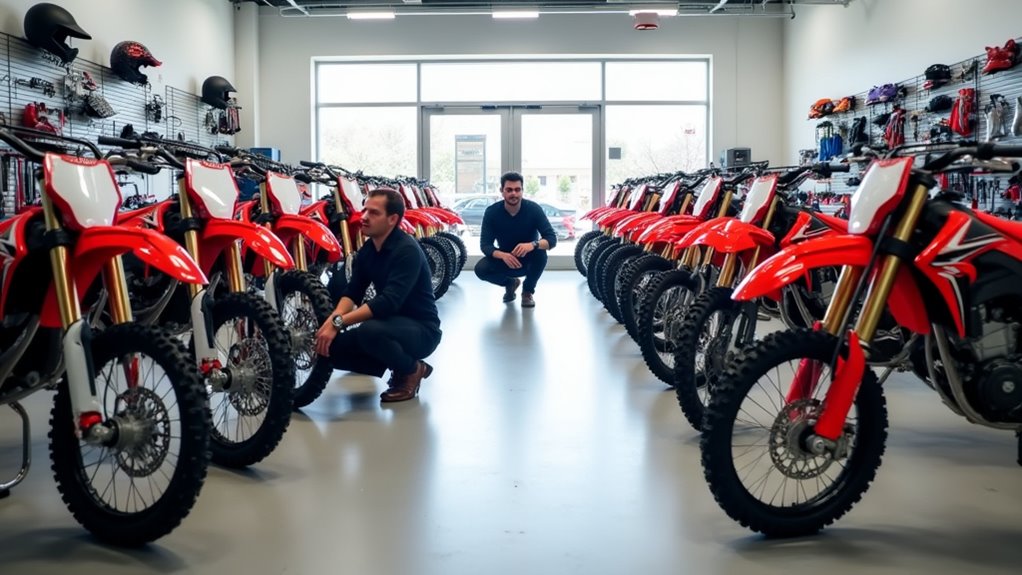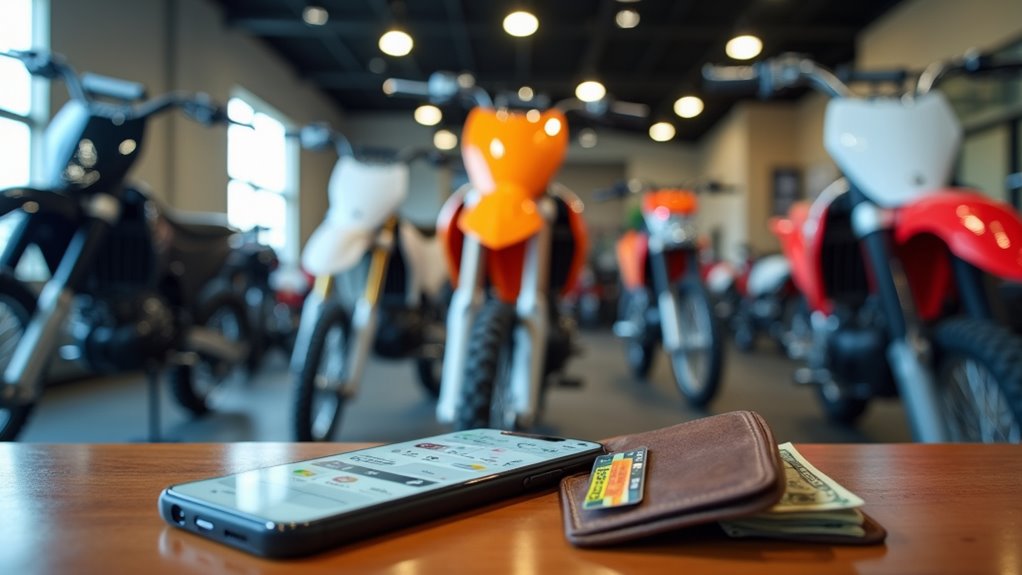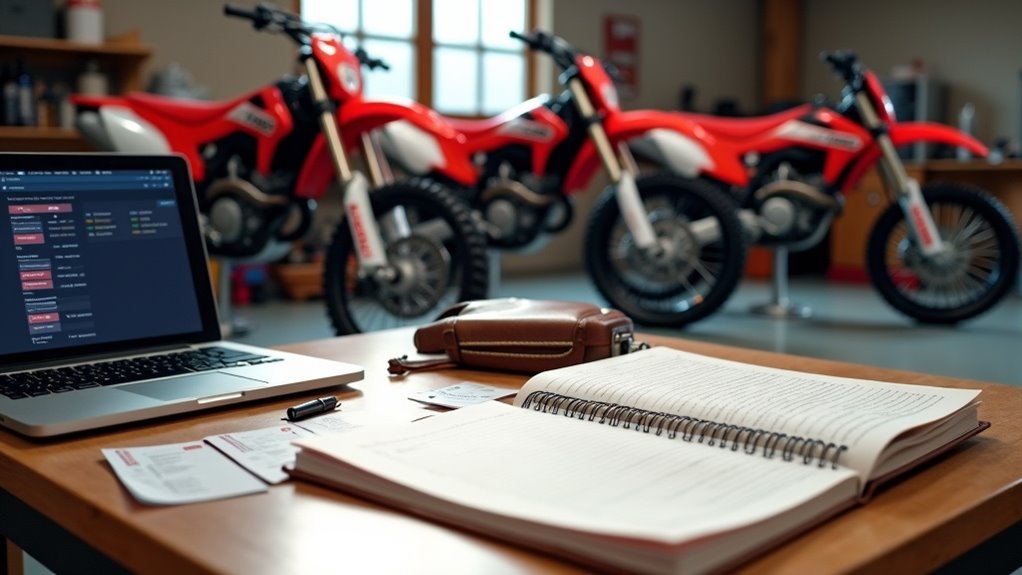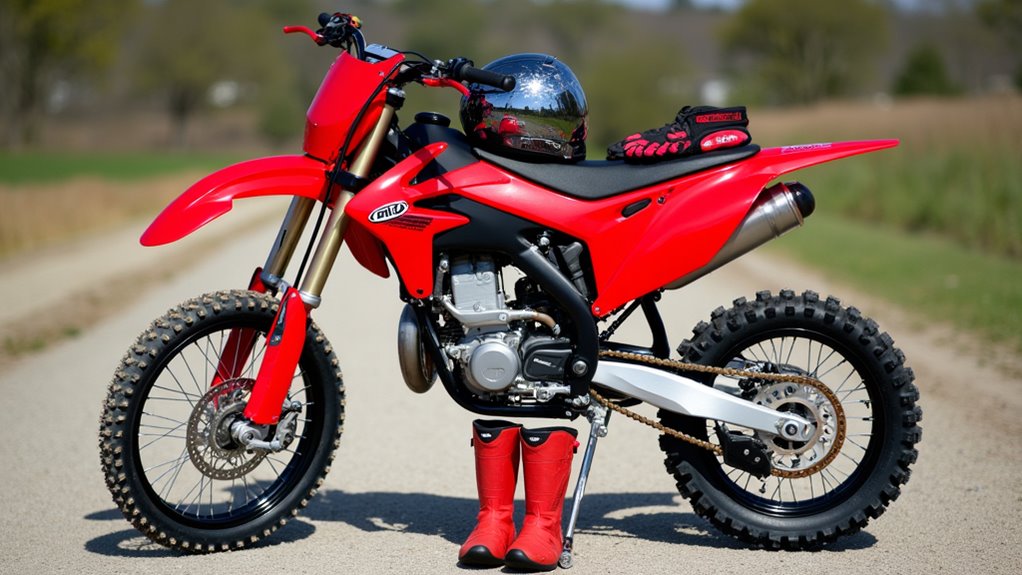Physical Address
304 North Cardinal St.
Dorchester Center, MA 02124
Physical Address
304 North Cardinal St.
Dorchester Center, MA 02124

Unlock the secrets to choosing the perfect dirt bike with these 7 expert tips that could save you from costly mistakes.
Each year, over 1.2 million dirt bikes are sold in North America, yet nearly 40% of first-time buyers report making costly purchasing mistakes. You don’t have to be part of that statistic. Whether you’re looking for a weekend hobby or competitive racing, choosing the right dirt bike involves more than just picking the shiniest model on the showroom floor. If you’re ready to join the off-road community, these seven essential tips will help you make a smart investment that matches your needs and skills.

When you’re ready to buy a dirt bike, understanding the different types available is essential for making the right choice. Each category serves a specific purpose and riding style that’ll affect your experience and wallet.
Motocross bikes excel at racing and jumping but aren’t ideal for casual trail riding. Their high-revving engines deliver exceptional acceleration for competitive riding.
If you’re planning long off-road adventures, consider enduro bikes with their larger fuel tanks and durable construction.
Trail bikes offer the best value for beginners, combining comfort with reliable performance and easier maintenance.
For riders needing street-legal options, dual-sport bikes provide versatility for both road and dirt, while adventure bikes add touring capabilities.
Consider electric dirt bikes if you’re environmentally conscious or need quiet operation.
There are also youth-specific models available if you’re shopping for a young rider.
Three key factors determine the perfect dirt bike match: your height, weight, and skill level. To find your ideal bike, you’ll need to match the seat height to your inseam measurement, ensuring you can touch the ground comfortably for better control and safety. A proper fit allows you to focus on the proper safety gear including helmets, boots, gloves, and body armor.
Finding your perfect dirt bike starts with three essentials: height, weight, and experience. A proper seat-to-inseam match ensures safe, confident riding.

Setting a smart budget for your dirt bike involves more than just the sticker price. While new bikes range from $1,749 to over $10,000, you’ll need to factor in essential safety gear ($500-$1,000) and annual maintenance costs ($1,550-$1,850).
If you’re looking to save money, consider a used bike, which can cost up to $5,000 less than its new counterpart. Different riding styles require specific bike features, which can significantly impact your final cost. However, don’t forget to account for storage costs ($360-$1,200 annually), accessories ($500-$2,200), and ongoing expenses like fuel and insurance.
If you’re just starting out, a quality used bike with proper safety gear might be your best option. Remember that engine replacements can cost up to $1,500, so it’s wise to set aside funds for potential repairs and regular maintenance to protect your investment.
Once you’ve determined your budget and found potential dirt bikes within your price range, a thorough inspection can save you thousands in future repairs and maintenance costs.
A careful pre-purchase inspection is your best defense against costly repairs and maintenance nightmares down the road.
Examining every component carefully will help you identify potential issues and negotiate a fair price.
Don’t forget to test wheel bearings and examine spokes for proper tension.
Pay special attention to chain condition, brake pad wear, and throttle response.

When selecting a dirt bike, brand reliability can make the difference between enjoying countless hours of riding and spending excessive time and money on repairs.
Honda, Yamaha, and Kawasaki consistently rank among the most dependable brands, offering proven durability and easy maintenance across their model ranges.
You’ll find Honda’s CRF series and Yamaha’s TT-R lineup particularly suitable if you’re a beginner, as they’re known for trouble-free operation and smooth handling.
For experienced riders, Yamaha’s YZ series delivers excellent performance without sacrificing reliability.
While KTM and Husqvarna produce high-performance bikes, they often require more frequent maintenance and specialized care. KTM’s commitment to constant evolution of technology makes them a top choice for competitive riders.
Consider both parts availability and dealer support in your area.
Yamaha, Honda, and Kawasaki’s extensive networks typically guarantee you’ll have ready access to repairs and components when needed.
A reliable dirt bike requires regular financial commitment beyond the initial purchase price.
You’ll need to budget carefully for both routine maintenance and unexpected repairs to keep your bike running safely and efficiently. Premium motorcycle brands tend to have higher maintenance costs.
Consider these essential maintenance costs:
Don’t forget to factor in storage solutions, protective gear maintenance, and potential insurance costs when planning your overall budget.

Safety gear isn’t an optional expense when it comes to dirt bike riding – it’s your essential protection against serious injury.
Start with a DOT, ECE, or Snell-certified helmet, along with goggles to shield your eyes from debris. You’ll need protective boots, gloves, and knee guards to prevent common injuries. Modern goggles feature wide outrigger systems that enhance comfort by positioning them deeper in your helmet.
Don’t skimp on chest protection and body armor – they’re important for safeguarding your essential organs and spine.
While shopping, make sure all gear fits properly and includes proper ventilation to keep you comfortable during long rides. Look for removable liners in helmets for easy cleaning.
Remember to inspect your gear regularly and replace any damaged items immediately.
Consider adding reflective elements and communication devices to enhance your safety, especially when riding with others.
Buying your first dirt bike can feel like maneuvering through a maze, but you’ll succeed by following these seven essential tips. Remember to stay within your budget, match the bike to your skill level, and never skip the test ride. By investing time in research and inspection while prioritizing safety gear and maintenance costs, you’re setting yourself up for years of thrilling off-road adventures.